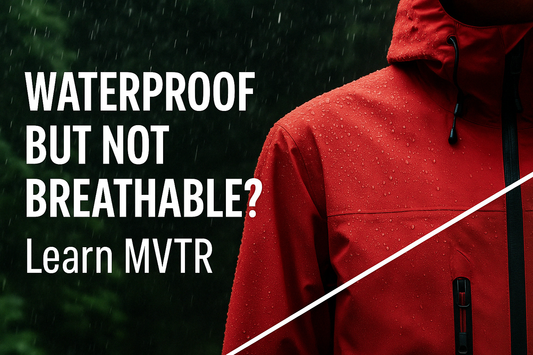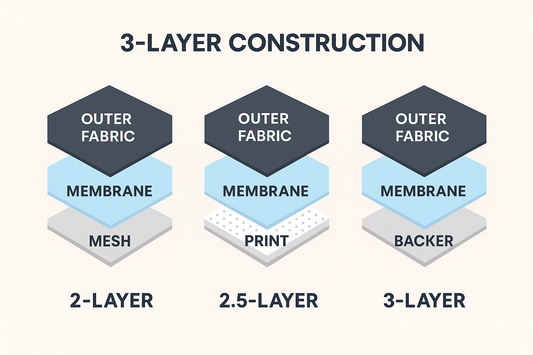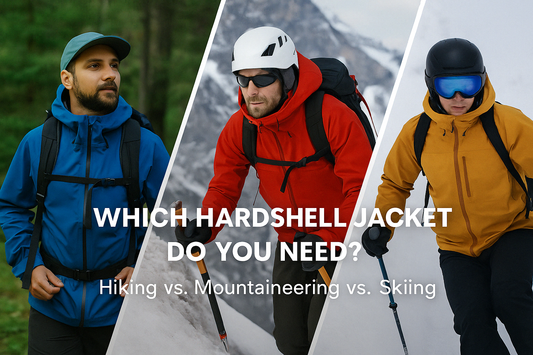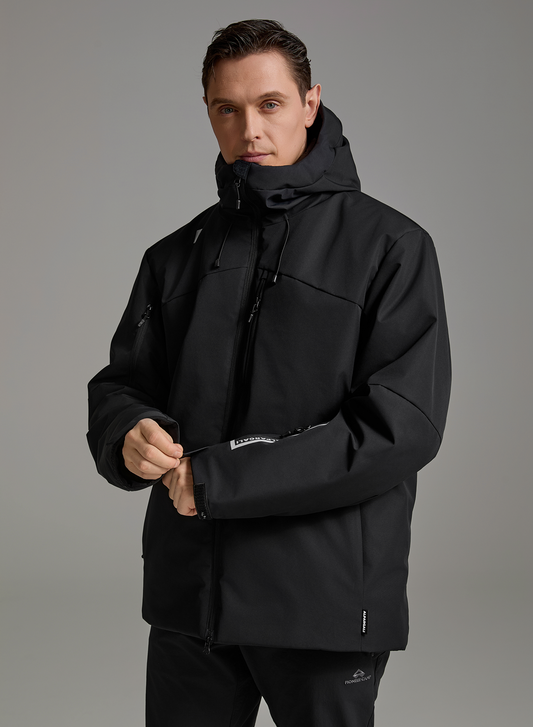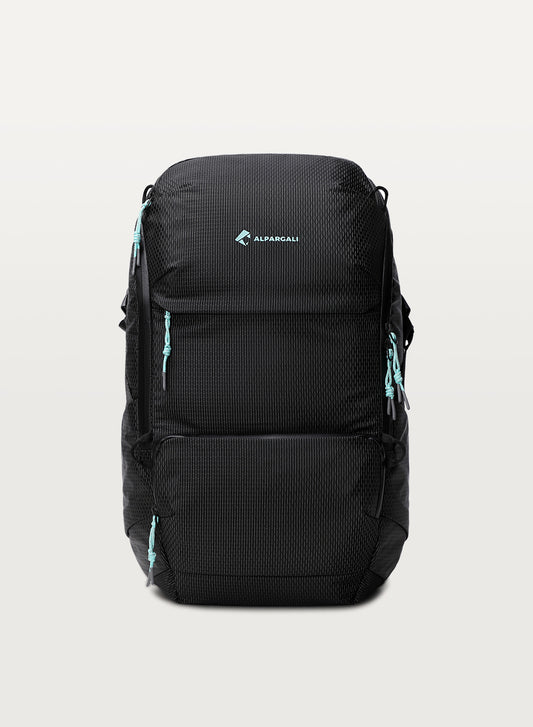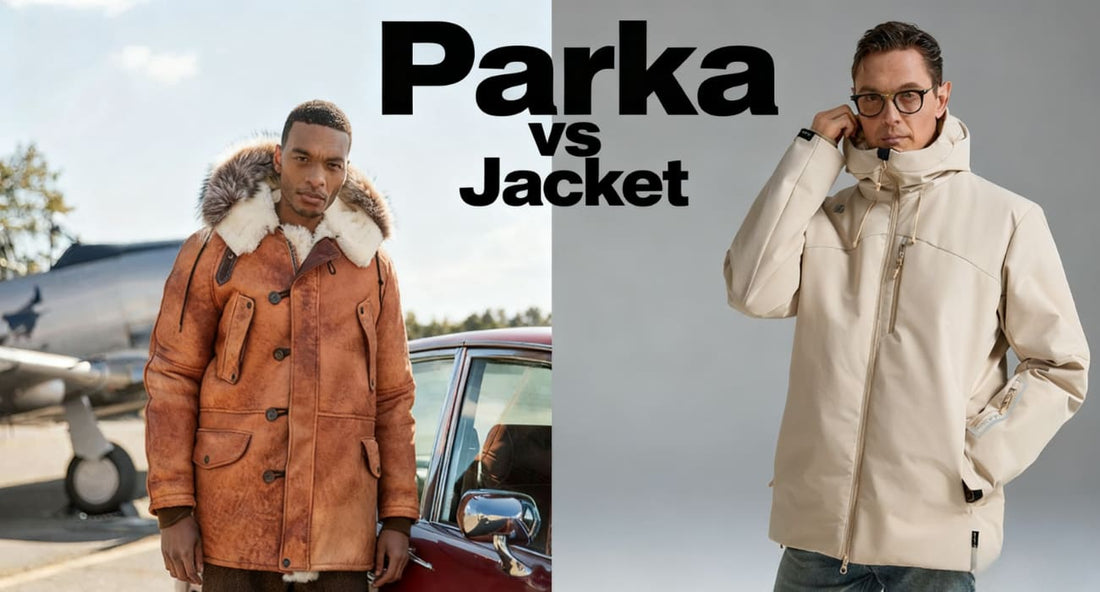
Parka vs Jacket: A Complete Guide to Winter Outerwear
Share
Winter is here, and with it comes the inevitable challenge of choosing the right outerwear to keep you warm and comfortable. With so many options available, it can be tricky to decide between a parka and a jacket.
Understanding the differences between these two types of outerwear can help you make the best choice for your winter wardrobe. In this article, we'll break down everything you need to know about parkas and jackets—helping you pick the right one for your needs.
What is a Parka?
A parka is a long, insulated jacket made to protect you from extreme cold.
Typically extending past the hips or knees, parkas are designed for warmth and to shield you from harsh weather. They often feature a fur-lined or insulated hood and thick insulation (down or synthetic) to trap heat, making them ideal for cold, windy, or snowy conditions.
What is a Parka Jacket Used For?
A parka is used to keep you warm and protected in cold, harsh environments. Whether for outdoor activities like skiing or snowboarding, or simply navigating winter in the city, parkas are built for extreme cold and offer great protection against wind and snow.
What Temperature is a Parka For?
Parkas are designed for very cold temperatures, typically best suited for environments where it’s below freezing (32°F/0°C) and can handle conditions as low as -20°F (-29°C) or colder.
Can You Use a Parka for Winter?
Yes. A parka is perfect for winter, offering excellent insulation, coverage, and protection against cold, snow, and wind. It’s built to keep you warm during extended exposure in freezing temperatures.
Is a Parka Waterproof?
Yes, many parkas are either waterproof or water-resistant. They are often made with weatherproof materials like nylon or polyester to protect you from rain and snow. However, not all parkas are fully waterproof, so look for specific waterproof labels if you need extra protection in wet conditions.
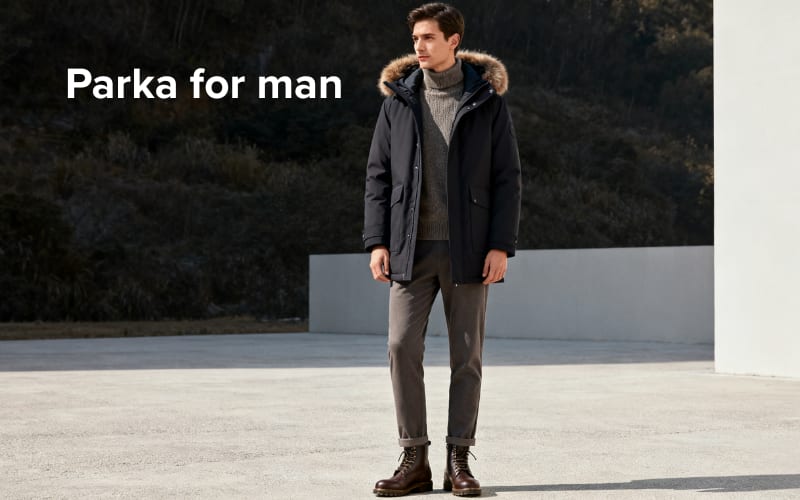
What is a Jacket?
A jacket is a short outerwear piece that covers the upper body, typically reaching the waist or hips.
Lighter than other outerwear, jackets are perfect for milder weather, offering basic warmth and wind protection. They come in various styles like leather, denim, and puffer jackets, making them versatile for both casual wear and layering in outdoor activities.
Parka vs Jacket: What's the Difference Between Parka and Jacket?
Choosing between a parka and a jacket can be tricky, as both serve the same purpose—keeping you warm. But when it comes to things like length, insulation, and style, there are some key differences that make one more suited to your needs than the other. Let's break it down:
Length and Coverage
The primary difference you’ll notice between a parka and a jacket is length.
-
Parka: These are longer, typically extending past the hips to the thighs or even knees. This added length helps cover more of your body, offering extra warmth and protection against the cold.
-
Jacket: Jackets, on the other hand, are shorter, usually ending around the waist or hips. While they keep your upper body warm, they leave your legs more exposed, making them less ideal for extreme cold.
Insulation and Warmth Materials
When it comes to warmth, parkas generally take the lead.
-
Parka: Designed for extreme cold, parkas are packed with thick insulation, often down or synthetic fibers, and are built to retain heat in freezing temperatures. They also typically feature a heavier outer shell to protect you from wind and snow.
-
Jacket: Jackets are lighter, with thinner insulation or even no insulation at all in some styles. They’re great for mild winter conditions but won't provide the same level of warmth in extreme cold as a parka would. However, our Aerogel Graphene Puffer Jackets have solved this issue. You can now get the warmth of a parka without the bulk, offering superior insulation and comfort even in extreme cold.
Appearance and Style
Style is where jackets often shine in terms of variety.
-
Parka: While parkas can be stylish, their focus is primarily on function. They tend to be bulkier and less tailored, with features like fur-lined hoods and weather-resistant materials designed for extreme conditions.
-
Jacket: Jackets come in all sorts of styles—bomber, leather, denim, etc.—and are generally more versatile for daily wear. They have a more modern, sleek appearance and are easier to style with different outfits.
What's the Difference Between a Parka and a Bomber Jacket?
A parka and a bomber jacket are quite different:
-
Parka: Long, insulated, and designed for extreme cold, a parka is built to protect you from harsh winter conditions and provide maximum warmth.
-
Bomber Jacket: A bomber jacket is shorter (usually waist-length), lighter, and more about style than warmth. It’s perfect for cooler, but not freezing, weather and is a popular casual choice.
In short, the parka is about warmth and practicality, while the bomber jacket is more about fashion and light protection.
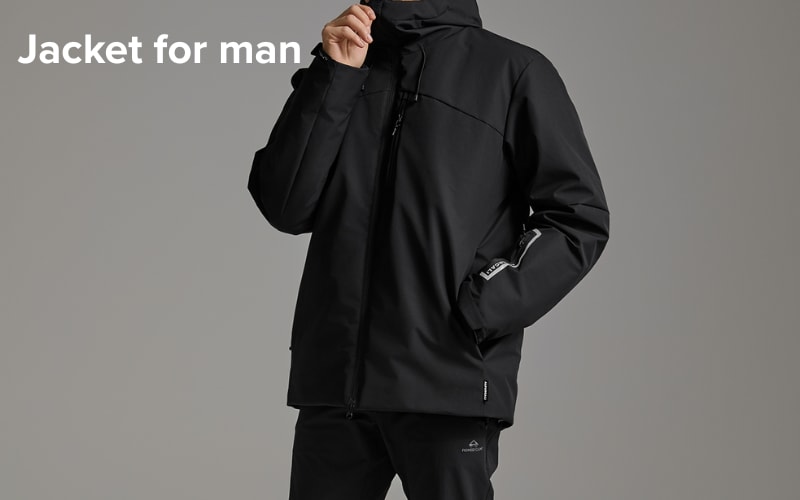
Parka vs Jacket: Where to Wear Them
Choosing between a parka and a jacket really comes down to where you're headed and what you'll be doing. Both are fantastic, but they each shine in different situations. Let’s break down where each one works best.
When to Wear a Parka:
Parkas are designed for extreme cold, so they’re the perfect choice when you're dealing with harsh winter weather.
-
Extreme Cold: If you live in a place where temperatures regularly dip below freezing—especially with snow and wind—a parka is your best bet. The added length and insulation keep you warm and shield you from the elements.
-
Outdoor Activities: Whether you’re skiing, snowboarding, or hiking in the winter, parkas are built for those extended outdoor adventures. Their length and insulation ensure that your body stays warm, even when you’re out in the cold for hours.
-
Extended Exposure to the Cold: If you know you’ll be outside for a while—like waiting for the bus on a freezing morning or standing at an outdoor event—a parka will keep you comfortable and warm through it all.
When to Wear a Jacket:
Jackets are lighter and more versatile, making them a solid choice for milder winter weather.
-
Milder Winter Days: Jackets are great for those crisp, not-too-cold winter days or early mornings in the fall and spring. They’re perfect for temperatures that aren’t freezing but still need a bit of warmth.
-
Active Movement: If you’re on the move a lot—whether it’s walking, running, or cycling—a jacket is the better option. It’s lightweight, breathable, and won't restrict your movement like a bulkier parka might.
- Casual City Wear: Jackets are great for everyday wear in the city. They’re easy to style, comfortable, and ideal for running errands or meeting friends without needing heavy insulation.
If you want to wear a jacket in colder winter temperatures, check out our Aerogel Graphene Puffer Jacket. Thanks to its 4-Layer Insulation System, it keeps you warm in temperatures ranging from -40°C/-40°F to +10°C/50°F. It offers the warmth of a parka, without the bulk, making it a perfect winter jacket option.
Parka vs Down Jacket
Both parkas and down jackets are popular choices for staying warm. While they serve a similar purpose, they each have their strengths. Let's explore what they have in common, where they differ, and which one might be better for your needs.
Similarities between Parka and Puffer:
Warmth: Both are designed to keep you warm in cold weather. They are highly effective in winter, particularly in freezing temperatures.
Outer Material: Both often feature windproof and waterproof outer layers, offering protection against harsh weather conditions like snow and wind.
Usage: Both are suitable for cold environments, whether it be snowy conditions, cold cities, or mountainous regions.
Differences between Parka and Puffer:
-
Insulation:
-
Parka: Parkas can be filled with various insulating materials, such as down, synthetic fibers, wool, or a combination. They tend to be thicker and more robust, making them suitable for extremely cold temperatures.
-
Down jacket: A down jacket is specifically filled with down (duck or goose feathers), which is known for its superior warmth-to-weight ratio. It is lightweight and highly insulating, making it ideal for cold weather but often in less extreme conditions.
-
Design and Length:
-
Parka: Parkas are typically longer, covering the thighs or knees, and are designed to provide extra warmth and protection from wind and snow. They often feature a hood, sometimes with a fur lining, and include more functional design elements.
-
Down jacket: Down jackets tend to be shorter, usually ending at the waist or hips. Their design is simpler and more streamlined, focusing on warmth without the added bulk of longer lengths.
-
Style and Purpose:
-
Parka: Parkas are generally more utilitarian in design, often inspired by military or outdoor gear. They are perfect for harsh winter environments where warmth and protection from the elements are critical.
-
Down jacket: Down jackets are lighter, often more stylish, and can be worn for both everyday use and colder, but less extreme, winter conditions.
-
Weight and Convenience:
-
Parka: Because of their length and additional features (such as fur hoods, multiple pockets, and thicker insulation), parkas are usually heavier and bulkier, which might make them less convenient for travel or carrying.
- Down jacket: Down jackets are much lighter due to the down insulation, which makes them more portable and easy to pack for travel or outdoor activities.
Learn more about Parka and Puffer.
Is a Parka Better Than a Down Jacket?
It depends on what you need. If you’re facing extreme cold, heavy snow, or long periods outdoors, a parka is probably your best bet. Its length, added insulation, and weather resistance make it ideal for harsh conditions.
However, if you're looking for something lightweight, breathable, and easy to move in for less extreme winter conditions, a down jacket might be the better choice. It's perfect for casual outings, mild winter days, or as a layering piece for extra warmth without the bulk.
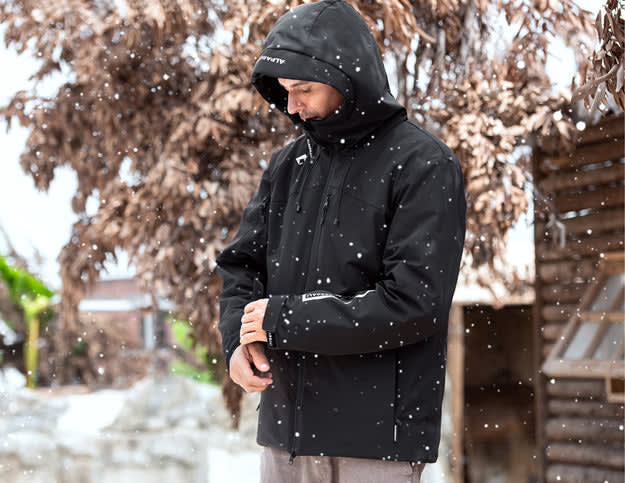
The Perfect Alternative to a Parka: The Alpargali Aerogel Graphene Puffer Jacket
Maybe you’ve been eyeing a parka for its warmth but hesitating because of its bulky design, or maybe you want something versatile enough for both extreme cold and everyday wear. Whatever the reason for your hesitation, the Alpargali Aerogel Graphene Puffer Jacket solves these problems—offering the warmth of a parka without any of the drawbacks.
If you've ever been put off by parkas because they can be too long or heavy, or you’ve found yourself wondering if you really need all the extra insulation and length, this jacket is the perfect alternative. The Aerogel Graphene Puffer Jacket provides exceptional warmth in temperatures ranging from -40°C/-40°F to +10°C/50°F but is still lightweight and easy to move in.
Not only does it solve the issue of warmth without the bulk, but it also addresses the versatility many look for in a jacket. Whether you’re commuting to work, exploring the city, or heading out for an outdoor adventure, this jacket’s sleek design and 4-layer insulation make it ideal for various activities without compromising on style or performance.
Plus, with features like 9 pockets, a weather-resistant Teflon-coated shell, and breathable underarm mesh ventilation, this jacket offers more than just warmth. It’s perfect for those who want maximum comfort, style, and functionality all in one.
So, if you’ve been on the fence about a parka due to weight, length, or just the fact that it feels too much for everyday wear, the Alpargali Aerogel Graphene Puffer Jacket is the smarter choice. It’s designed to keep you warm, comfortable, and ready for any situation, whether you're facing the cold outdoors or heading out for a casual day in the city.
To sum it up, choosing between parka coat and jacket ultimately comes down to your specific needs. If you're looking for something that combines warmth with comfort, while still being practical for everyday wear, the Alpargali Aerogel Graphene Puffer Jacket offers a fantastic solution. It's versatile, lightweight, and perfectly suited for a variety of cold-weather activities.
Curious to explore more? Visit our Clothing Comparison page to see how different styles stack up and find the ideal piece to fit your winter wardrobe.
FAQs about Parka vs Jacket
What type of jacket keeps you the warmest?
The Alpargali Aerogel Graphene Puffer Jacket is one of the warmest jackets you can get. With its advanced 4-layer insulation system and cutting-edge aerogel and graphene technology, it provides warmth similar to a parka, but with less bulk. Perfect for extreme cold or milder temperatures, it’s designed to keep you comfortable no matter the conditions.
What qualifies as a parka?
A parka is typically a long, insulated jacket designed for extremely cold weather. It often features a hood (sometimes fur-lined), extended length (usually covering the thighs or knees), and heavy insulation to protect against freezing temperatures, wind, and snow.
Why is a jacket called a parka?
The term “parka” originates from the Inuit word for animal skin, as the original versions were made from fur or seal skin. Over time, the term evolved to describe any insulated, hooded jacket used for extreme cold, which is why some jackets with similar features are still called parkas today.
What is a longer jacket called?
A longer jacket is typically called a coat or parka depending on its length and insulation. If it extends below the hips or to the knees, it’s often considered a parka. A longer coat, typically made for more formal wear, could also be referred to as an overcoat.
What do Americans call a parka?
In the U.S., a parka is commonly referred to as a long, insulated jacket with a hood, designed for cold weather. It’s often seen in extreme climates where the need for warmth and weather protection is paramount.
What is the warmest type of winter coat?
The Alpargali Aerogel Graphene Puffer Jacket offers one of the warmest solutions for winter. With aerogel insulation and graphene technology, it delivers exceptional warmth without the bulk of traditional parkas, making it ideal for harsh winter conditions and offering warmth similar to that of a parka.
